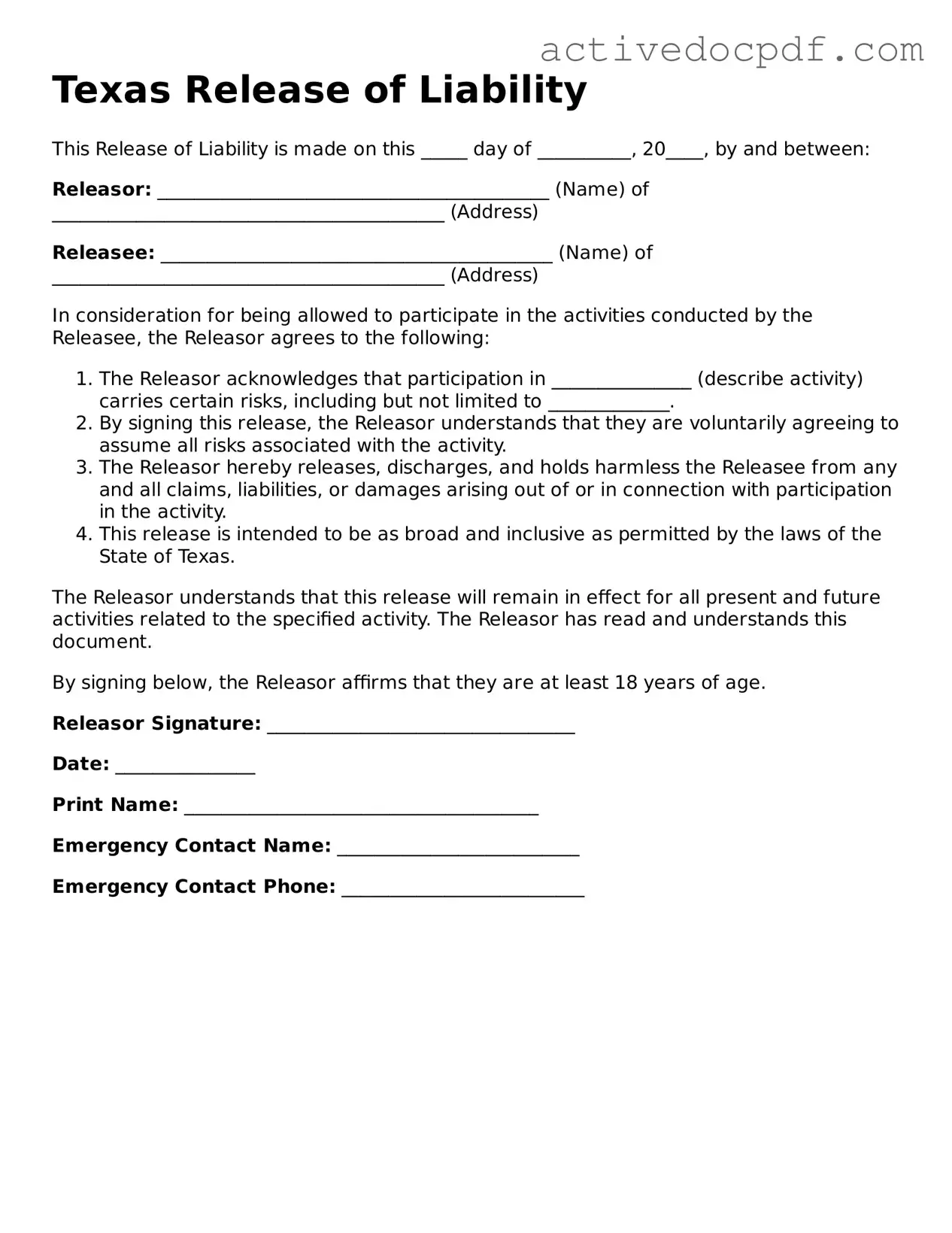A Texas Release of Liability form is a legal document that individuals or organizations use to limit their liability for injuries or damages that may occur during a specific activity or event. This form typically outlines the risks associated with the activity and requires participants to acknowledge and accept those risks, thereby waiving their right to sue for any resulting injuries or damages.
This form is commonly used in situations where there is a potential for injury or risk, such as:
-
Sports activities, including recreational leagues and tournaments
-
Outdoor events, such as hiking, camping, or water sports
-
Workshops or classes involving physical activities
-
Any event where participants may encounter hazards
Using a Release of Liability form helps protect organizers from legal claims arising from accidents or injuries that participants may sustain during these activities.
Yes, a Release of Liability form can be legally binding in Texas, provided it meets certain criteria. For the form to be enforceable, it must be clear, specific, and voluntarily signed by the participant. Additionally, the form should not violate public policy or involve gross negligence or intentional misconduct.
A comprehensive Texas Release of Liability form should include the following elements:
-
The names and contact information of the parties involved
-
A detailed description of the activity or event
-
A statement outlining the risks associated with the activity
-
Language indicating that the participant voluntarily accepts these risks
-
A waiver of liability clause, releasing the organizer from claims
-
Signature lines for participants and, if applicable, a parent or guardian
-
The date of the agreement
In Texas, minors cannot legally sign contracts, including a Release of Liability form. However, a parent or legal guardian can sign on behalf of the minor. It is essential to ensure that the form clearly indicates that the parent or guardian is signing for the minor to ensure its enforceability.
Failing to use a Release of Liability form may expose organizers to legal claims and financial liability in the event of an accident or injury. Without this form, participants may have the right to sue for damages, which could lead to costly legal battles and settlements. Utilizing the form helps mitigate these risks.
A Texas Release of Liability form can be obtained from various sources, including:
-
Legal websites that offer templates
-
Local attorneys who specialize in liability law
-
Community organizations or sports leagues that may have standard forms
It is advisable to review the form with a legal professional to ensure it meets all legal requirements and adequately protects against potential liabilities.
